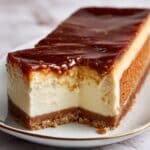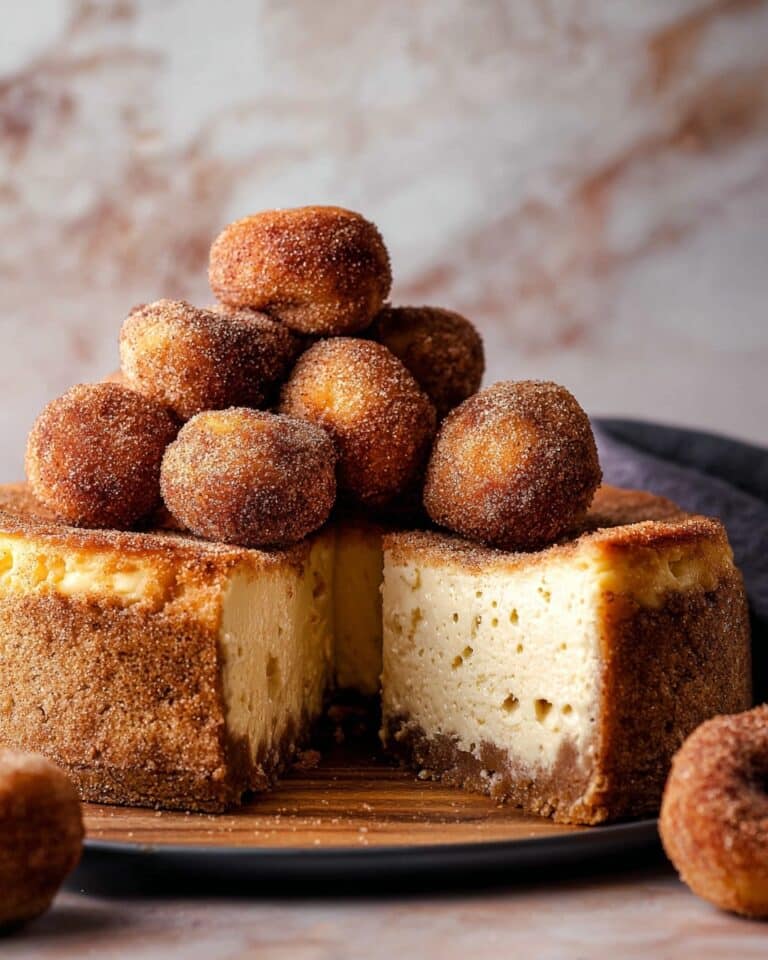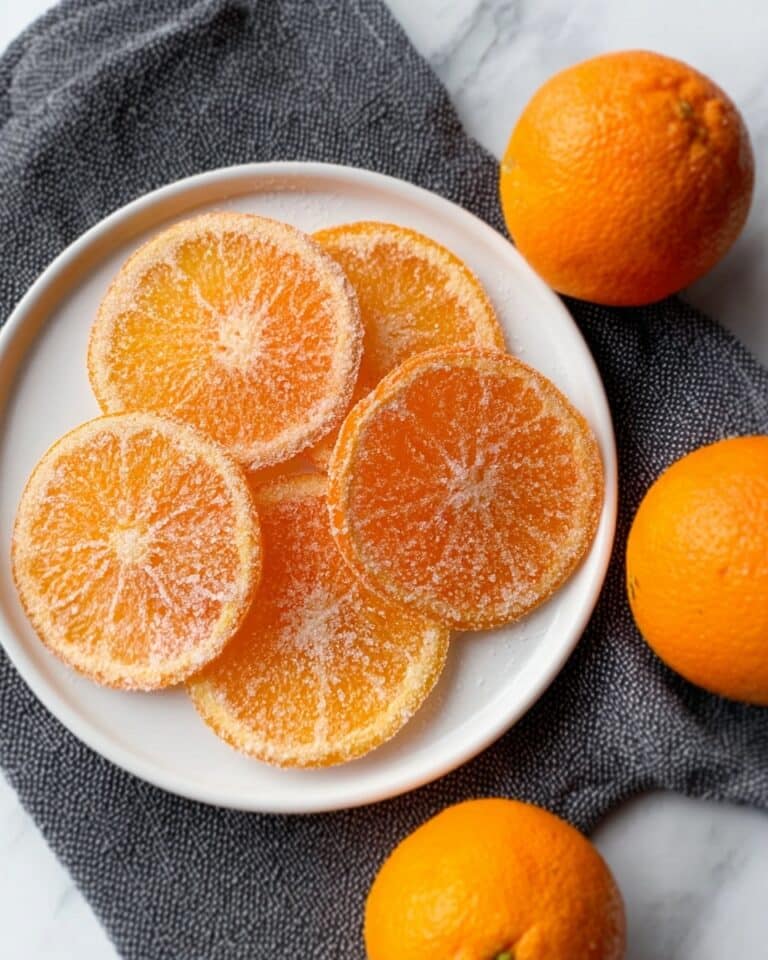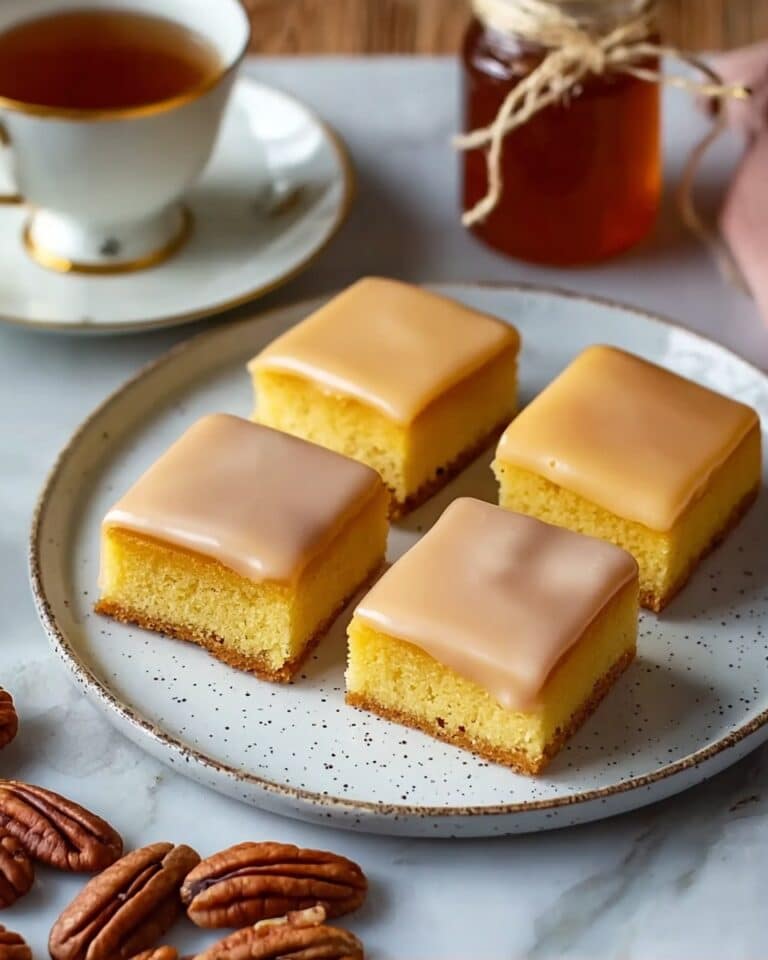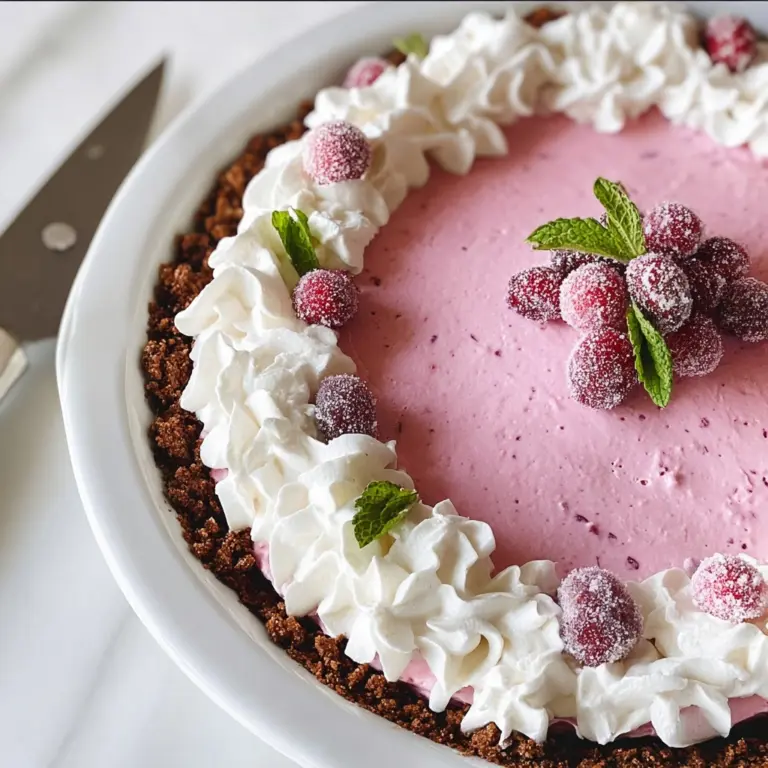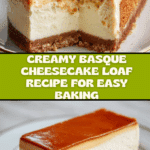Basque Cheesecake Loaf Pan Recipe
Introduction
This Basque Cheesecake Loaf Pan version offers a rich and creamy dessert with a signature caramelized top. It’s easier to slice than the traditional round Basque cheesecake, making it perfect for sharing or serving at gatherings.

Ingredients
- 24 ounces (680g) full-fat cream cheese, softened to room temperature
- 1 cup (200g) granulated sugar
- 4 large eggs
- 1 cup (240ml) heavy cream
- 1 teaspoon vanilla extract
- 2 tablespoons (16g) all-purpose flour
- 1/4 teaspoon salt
Instructions
- Step 1: In a large bowl, use an electric mixer to beat the softened cream cheese on medium speed until smooth and creamy, about 3-5 minutes. Scrape down the sides and bottom of the bowl as needed.
- Step 2: Gradually add the sugar to the cream cheese, beating on medium speed until light and fluffy, about 2-3 minutes, scraping the bowl occasionally.
- Step 3: Add the eggs one at a time, beating well after each addition until just combined.
- Step 4: Pour in the heavy cream and vanilla extract. Mix on low speed until just combined.
- Step 5: Sift the flour and salt over the batter, then gently fold them in with a spatula until just incorporated. Avoid overmixing.
- Step 6: Preheat your oven to 425°F (220°C).
- Step 7: Generously line a 9×5 inch loaf pan with parchment paper, allowing the paper to extend several inches above the sides. Crumple the parchment before lining the pan to help it fit better.
- Step 8: Pour the batter into the prepared loaf pan.
- Step 9: Bake for 50-60 minutes until the top is deeply browned and almost burnt-looking. The center should remain quite jiggly. The internal temperature should be about 150-160°F (65-71°C).
- Step 10: Turn off the oven and crack the door open slightly. Let the cheesecake cool inside the oven for 1 hour.
- Step 11: Remove from oven and cool completely on the counter. Cover loosely with plastic wrap and refrigerate for at least 4 hours, preferably overnight.
- Step 12: Use the parchment paper overhang to gently lift the cheesecake out of the pan. Slice into thick pieces with a sharp knife.
- Step 13: Serve chilled or at room temperature and enjoy.
Tips & Variations
- For extra flavor, add a tablespoon of lemon zest to the batter before baking.
- Use a kitchen thermometer to check doneness for perfectly creamy texture.
- Try swapping half the heavy cream for sour cream for a tangier outcome.
- Make sure cream cheese is fully softened to avoid lumps in the batter.
Storage
Store the cheesecake tightly wrapped or in an airtight container in the refrigerator for up to 4 days. Reheat slices briefly at room temperature or serve cold. This cheesecake can also be frozen for up to 1 month; thaw overnight in the refrigerator before serving.
How to Serve

Serve this delicious recipe with your favorite sides.
FAQs
Can I make this cheesecake in a round pan instead?
Yes, you can use a similarly sized round springform pan, but expect a different shape and baking time. A loaf pan makes slicing easier and creates a unique presentation.
Why does the top of the cheesecake look burnt?
The dark, almost burnt-looking top is characteristic of Basque cheesecake and adds a slightly caramelized flavor. This is normal and part of the cheesecake’s appeal.
PrintBasque Cheesecake Loaf Pan Recipe
This Basque Cheesecake Loaf Pan recipe offers a rich, creamy, and deeply caramelized cheesecake with a signature burnt top and a soft, jiggly center. Made in a loaf pan and baked at a high temperature to develop a beautiful crust, this no-fuss cheesecake combines the luxurious texture of cream cheese with the smoothness of heavy cream and a subtle hint of vanilla. Perfect for dessert lovers who appreciate a rustic yet elegant presentation.
- Prep Time: 15 minutes
- Cook Time: 50-60 minutes
- Total Time: 5 hours 15 minutes (including cooling and chilling time)
- Yield: 8–10 servings 1x
- Category: Dessert
- Method: Baking
- Cuisine: Basque (Spanish)
- Diet: Vegetarian
Ingredients
Cheesecake Batter
- 24 ounces (680g) full-fat cream cheese, softened to room temperature
- 1 cup (200g) granulated sugar
- 4 large eggs
- 1 cup (240ml) heavy cream
- 1 teaspoon vanilla extract
- 2 tablespoons (16g) all-purpose flour
- 1/4 teaspoon salt
Instructions
- Cream the Cream Cheese: In a large bowl, using an electric mixer (stand or hand), beat the softened cream cheese on medium speed for 3-5 minutes until completely smooth and creamy. Scrape down the sides and bottom of the bowl frequently to ensure even mixing.
- Add Sugar Gradually: Slowly add the granulated sugar to the creamed cheese while continuing to beat on medium speed for 2-3 minutes until the mixture is light, fluffy, and well combined. Scrape down the bowl as needed.
- Incorporate the Eggs: Add the eggs one at a time, beating well after each addition to combine fully, but avoid overmixing to preserve texture.
- Add Heavy Cream and Vanilla: Pour in the heavy cream and vanilla extract; mix on low speed just until combined to create a smooth batter.
- Add Flour and Salt: Sift the all-purpose flour and salt over the batter. Gently fold these into the mixture with a spatula until just incorporated, being careful not to overmix.
- Preheat the Oven: Heat your oven to 425°F (220°C) to prepare for baking.
- Line the Loaf Pan: Generously line a 9×5 inch loaf pan with parchment paper, allowing the paper to extend several inches over the sides. Crumple the parchment paper prior to placing to help it fit and create texture.
- Pour in the Batter: Transfer the cheesecake batter into the prepared loaf pan, spreading it evenly.
- Bake: Place the loaf pan in the preheated oven and bake for 50 to 60 minutes. The top should be deeply browned and almost burnt-looking, while the center remains quite jiggly. The internal temperature should reach approximately 150-160°F (65-71°C).
- Cooling: Turn off the oven and slightly crack the oven door. Let the cheesecake cool inside the oven for about 1 hour to prevent sudden temperature changes and cracking.
- Refrigerate: Remove the cheesecake from the oven, let it cool completely at room temperature, then cover it loosely with plastic wrap. Refrigerate for at least 4 hours, preferably overnight, to set.
- Unmold: Once fully chilled, gently lift the cheesecake out of the loaf pan using the overhanging parchment paper.
- Slice and Serve: Place the cheesecake on a serving platter and cut into thick slices with a sharp knife. Serve chilled or at room temperature for best flavor and texture.
Notes
- Make sure cream cheese is at room temperature to avoid lumps in the batter.
- Do not overmix once eggs and flour are added; overmixing can result in a dense cheesecake.
- The burnt top is intentional and adds the signature Basque flavor – do not worry if it looks very dark.
- Letting the cheesecake cool gradually in the oven prevents cracks on the surface.
- Refrigeration is necessary for the cheesecake to set properly and enhance flavor.
- Use high-quality cream cheese and vanilla extract for the best taste.
- Loaf pan size is important for proper baking; a 9×5 inch pan works best.
Keywords: Basque cheesecake, burnt cheesecake, creamy cheesecake loaf, parchment-lined cheesecake, high-heat baked cheesecake

